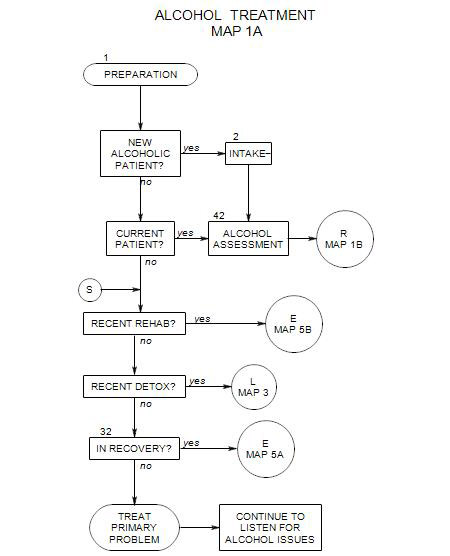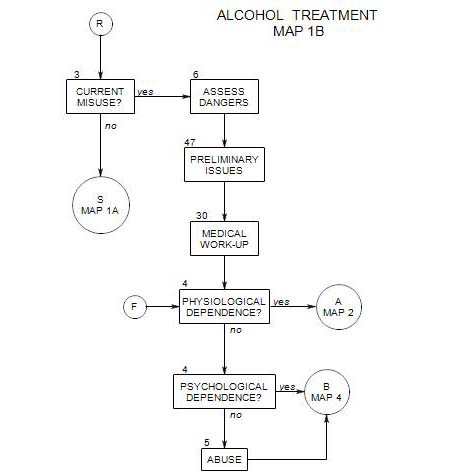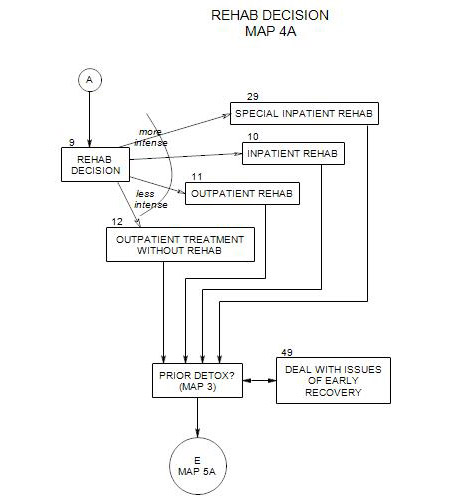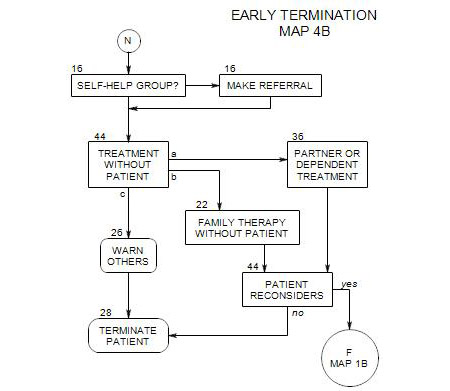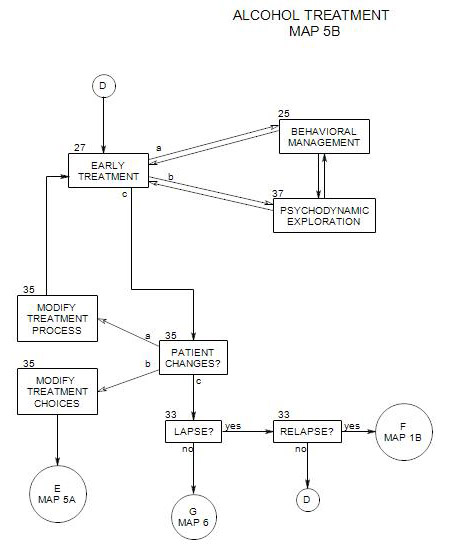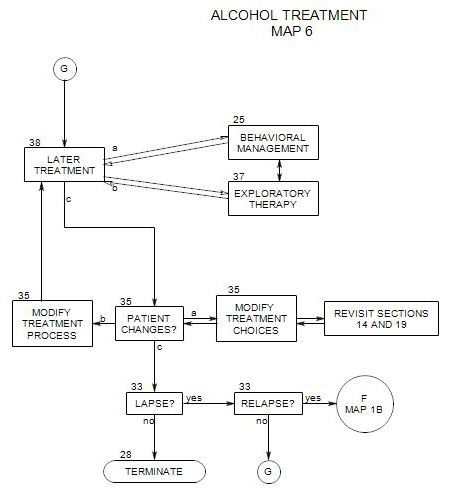- This section is intended to be used in conjunction with Section 2, Section 3, and Section 42, making use of information gathered in intake sessions.
The criteria for abuse relate to the negative effects that drinking has on the person or others, either in the form of damage or risk of damage, as listed below. General symptoms of abuse of alcohol were listed under “Alcohol Misuse’ in Section 3d. Abuse differs from dependence mainly in being episodic rather than chronic, and episodes can in some cases be infrequent or even rare.A person abuses alcohol when s/he drinks repeatedly (though perhaps not regularly), and
either fails to carry out his/her responsibilities, at work or at home, because of drinking;
or is a possible danger to self or others when drinking, especially when judgment is compromised, attention affected or coordination reduced, as in driving a vehicle or operating machinery;
or has legal complications such as drunk driving;
or has new or increased interpersonal or social difficulties such as arguing, fighting, becoming overly passive, sexual acting out, etc., because of drinking;
or looks forward to drinking with anticipation, to the point that drinking becomes a primary focus of upcoming events.
At the same time, the behavior of an alcohol abuser does not meet the criteria for either psychological or physiological dependence, in that –
- the person is able to go for substantial periods of time without drinking;
- there are no persistent withdrawal symptoms when the person stops drinking;
- it does not involve increasing tolerance; and
- use is not compulsive.
There are degrees of abuse, as anything else, and some people may be more compromised by episodic drinking than others.
For example, one person may get drunk in the basement every Friday night and sing along with musical comedies on the television, then be hung over for most of Saturday, recover, and return to family on Sunday and work on Monday. The person is abusing alcohol. Another may stay sober for weeks or months at a time, then be drunk for five days in a row, until her money runs out or someone finds her. During the episode, she may be using any other drugs she can find, wandering into strange places, falling asleep in strange beds, etc. Her abuse is certainly greater and riskier than the abuse of the first person, and there is a greater urgency in helping her to stop misusing alcohol, even if her misuse is infrequent.
As the examples show, “infrequent” is loosely defined. However, you probably wouldn’t begin treating a person for alcohol abuse if there hadn’t been an episode in the past year. [You might treat for other issues and watch for impulses to drink, though.]
There is evidence that people who have been physiologically dependent are forever unable to drink too much without falling back into dependency. For this reason, a person who has ever been dependent and drinks too much is most likely dependent again, not abusing.
Reference: DSM IV, p.196
